Introduction
Why Were Pigeons Domesticated: The domestication of pigeons, often referred to as “rock doves,” is a fascinating chapter in the long history of human-animal interactions. Unlike some other domesticated animals like dogs or cattle, pigeons were not primarily chosen for their utility in labor or food production. Instead, the domestication of pigeons can be traced back to various cultural, religious, and practical reasons that have evolved over millennia. This remarkable journey of domestication, which began thousands of years ago, reflects the diverse roles pigeons have played in human societies across different regions of the world.
We will delve into the intriguing motivations behind the domestication of pigeons, shedding light on their significance in human history. Pigeons, scientifically known as Columba livia domestica, were initially domesticated for their symbolic and utilitarian value. In ancient civilizations, including those of the Egyptians, Romans, and Mesopotamians, pigeons were revered for their role as symbols of divinity and were associated with deities like Venus, Aphrodite, and Ishtar. Their ability to return to their nests and their distinctive cooing sounds were seen as mystical qualities, further elevating their status.
Pigeons were used as a means of communication, serving as reliable messengers during times of war and peace. They were employed to deliver important messages over long distances, often with remarkable accuracy. Their homing instinct and keen sense of direction made them invaluable assets for military and civilian purposes alike. As time passed, pigeons began to serve additional practical purposes. They were raised for their meat, eggs, and feathers, providing a valuable source of nutrition and materials. Pigeon racing also emerged as a popular sport, highlighting the selective breeding efforts aimed at enhancing their flying abilities.
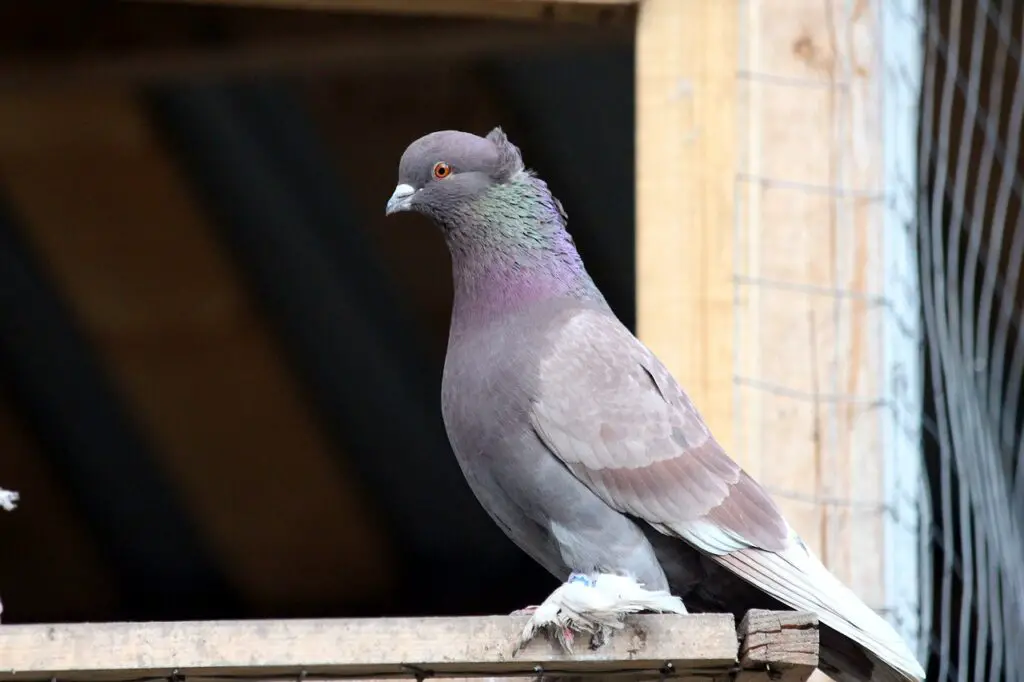
Were pigeons supposed to be domesticated?
The pigeon was domesticated not only for its ability to return home and as a source of food and by-products, but also for the purposes of sport. Man has found many sporting uses for the pigeon throughout history, with the earliest known example being the sport of Triganieri.
The domestication of pigeons, while not originally intended, evolved organically due to a combination of factors. Pigeons, also known as rock doves, are naturally social birds that readily adapt to human environments. This adaptability, coupled with their docile nature, likely made them appealing to early human populations. It is believed that pigeons first began to associate with human settlements in search of food scraps, water sources, and shelter.
Over time, humans began to recognize the benefits of having pigeons around. Their ability to return to their nests and their distinctive cooing sounds likely sparked curiosity and superstition, leading to their association with deities in various cultures. This symbolic connection contributed to their gradual domestication.
While the initial domestication of pigeons may not have been a deliberate endeavor, their adaptability, utility, and cultural significance led to their eventual domestication and integration into human history. Thus, whether by chance or design, pigeons became an enduring part of our shared human experience.
What is a domesticated pigeon called?
While several of the approximately 300 species of pigeons and doves (family Columbidae) are kept as pets, the term domestic pigeon usually refers to breeds of Columba livia, the rock pigeon. Pigeon breeding is a popular hobby worldwide, and over 350 different breeds are currently recognized.
A domesticated pigeon is commonly referred to as a homing pigeon or racing pigeon. These pigeons are descendants of wild rock doves (Columba livia) that were selectively bred and raised by humans for various purposes. The term
domesticated in this context means that they have adapted to living in close proximity to humans and have been bred for specific traits.
Homing pigeons are perhaps the most well-known domesticated pigeons due to their exceptional navigational abilities. They were historically used as messengers, capable of flying long distances and accurately returning to their home lofts. This skill made them invaluable for communication, particularly in times of war or when swift, reliable message delivery was essential.
Racing pigeons, on the other hand, have been selectively bred for speed and endurance. They are used in competitive pigeon racing, a sport in which pigeons are released from a specific location and race back to their home lofts. These birds can cover impressive distances at remarkable speeds, showcasing the results of careful breeding and training.
Were pigeons the first domesticated?
Pigeons have lived alongside man for thousands of years and are considered to be the oldest domesticated animal. The first images of pigeons found by archaeologists come from Mesopotamia (modern Iraq).
No, pigeons were not the first animals to be domesticated by humans. The domestication of animals dates back thousands of years, with dogs likely being one of the earliest domesticated species. Dogs were likely domesticated for their hunting and guarding abilities, and their partnership with humans can be traced back tens of thousands of years.
Other early domesticated animals include goats, sheep, and cattle, which were raised for their meat, milk, and labor. These animals played crucial roles in the development of agriculture and the transition from nomadic hunting and gathering societies to settled farming communities.
Pigeon domestication, on the other hand, likely occurred later in human history and was driven by different motivations. Pigeons were initially associated with spirituality and religion and were later used for messaging purposes and racing.
Is the oldest pigeon still alive?
The oldest living pigeon ever recorded was Peace, who lived to be an astonishing 147 years old in pigeon time. That’s 24 years and 188 days in pigeon time.
It’s highly unlikely that the oldest pigeon in the world is still alive. Pigeons, like most birds, have relatively short life spans compared to humans. In the wild, their average lifespan is typically around 3 to 5 years, although many succumb to predators, diseases, or harsh environmental conditions well before reaching their maximum potential age.
To determine the oldest living pigeon, one would need access to comprehensive records of pigeon breeding and maintenance, which is not typically available on a global scale. Moreover, pigeons do not receive the same level of attention or documentation as, say, record-breaking humans or other domesticated animals like dogs or cats.
While pigeons can live relatively long lives for birds, it’s improbable that the oldest pigeon in the world is still alive, as their lifespans are relatively short compared to humans, and comprehensive, widely accepted records for pigeon longevity are not readily available.
Why are pigeons misunderstood?
While they’re not a native species, they’re also not invasive like European starlings. Because people tamed them to be comfortable alongside humans, they’re now only comfortable alongside humans. That means they tend to linger where we are, and they don’t displace any native species.
Negative Stereotypes: Pigeons are sometimes unfairly associated with filth and disease, primarily because they are found in urban areas where they scavenge for food scraps. While they can transmit diseases, the risk to humans is quite low, and proper hygiene and sanitation can mitigate these concerns.
Overlooked Intelligence: Pigeons are surprisingly intelligent birds. They have excellent navigational skills and can recognize themselves in mirrors, a cognitive ability once thought to be unique to humans and a few other animals.
Cultural Factors: In some cultures, pigeons have negative connotations or superstitions associated with them, further perpetuating misunderstanding. Conversely, in other cultures, pigeons hold symbolic or religious significance.
Urban Environment: Pigeons’ adaptation to urban life has made them a common sight in cities around the world. This prevalence can lead to people taking them for granted and not appreciating their unique characteristics.
Lack of Awareness: Many people simply do not know much about pigeons beyond their urban presence. They are not as popular in the media or conservation efforts as other bird species, contributing to their misunderstanding.
What are pigeons scared of?
Pigeons hate the sight or presence of other domineering birds, such as birds of prey. This is what makes falconry such a successful deterrent in getting rid of pigeon populations. Pigeons do not like strong smells, such as cinnamon or hot pepper juice or spray.
Predators: Pigeons are prey animals, and their primary fear is of predators. This includes birds of prey like hawks and falcons, as well as terrestrial predators such as cats and dogs. The sight or presence of these potential threats can send pigeons into flight or hiding.
Sudden Loud Noises: Pigeons, like most birds, are sensitive to loud and sudden noises. Fireworks, thunderstorms, or even a car backfiring can startle them and cause them to flee.
Sudden Movements: Pigeons are wary of fast and unexpected movements. If a human or another animal makes sudden gestures or movements toward them, pigeons may take flight in response.
Unfamiliar Objects or Changes: Pigeons tend to be cautious about new or unfamiliar objects in their environment. This can include construction equipment, new structures, or even changes to their usual perches.
Crowds and Commotion: While pigeons have adapted to urban environments and are often seen around people, large and noisy crowds can make them nervous. They may avoid crowded areas or fly away when they become overwhelmed.
When were pigeons used?
The sport of flying messenger pigeons was well-established as early as 3000 years ago. They were used to proclaim the winner of the Ancient Olympics. Messenger pigeons were used as early as 1150 in Baghdad and also later by Genghis Khan.
Ancient Times: In ancient civilizations such as Egypt, Greece, and Mesopotamia, pigeons were revered and associated with deities. They were considered sacred birds and were used in religious ceremonies. The distinctive cooing sounds and the birds’ ability to return to their nests were seen as mystical qualities.
Communication: Pigeons were used as messengers in different parts of the world, particularly during times of war and conflict. Their remarkable homing instinct allowed them to carry important messages over long distances, often with great accuracy. This practice continued through various wars, including both World Wars.
Food Source: Pigeons have been raised for their meat, eggs, and feathers. Their relatively quick reproductive cycle and ability to thrive in urban environments made them a readily available and sustainable source of nutrition for many cultures.
Sport: Pigeon racing emerged as a popular sport in the 19th century, particularly in Europe and the United States. Racing pigeons were selectively bred for their speed and endurance, and competitions involved releasing them from one location and timing their return to their home lofts.
Scientific Research: Pigeons have been subjects of scientific study, particularly in fields like psychology and behavioral science. Their cognitive abilities, including problem-solving and pattern recognition, have made them valuable research subjects.
What is the story behind pigeons?
Research suggests that domestication of pigeons occurred as early as 10,000 years ago. Pigeons have held historical importance to humans as food, pets, holy animals, and messengers. Due to their homing ability, pigeons have been used to deliver messages, including during the world wars.
Early Symbolism and Religion: Pigeons were initially associated with spirituality and divinity in ancient civilizations. They were revered and considered sacred birds, often linked to deities like Aphrodite and Ishtar. Their ability to return to their nests and their distinctive cooing sounds were seen as mystical qualities.
Pigeons as Messengers: Pigeons’ domestication took a practical turn when their homing instinct was recognized. They were used as reliable messengers, delivering crucial information during times of war and peace. This role made them invaluable in military and civilian communications for centuries.
Food and Sport: Over time, pigeons also became a source of food, with their meat and eggs being consumed in various cultures. Additionally, they were raised for sport, particularly in pigeon racing, where their speed and endurance were celebrated.
Scientific Study: Pigeons have been subjects of scientific research, revealing insights into their cognitive abilities and navigation skills. Their contributions to psychology and behavioral science have been significant.
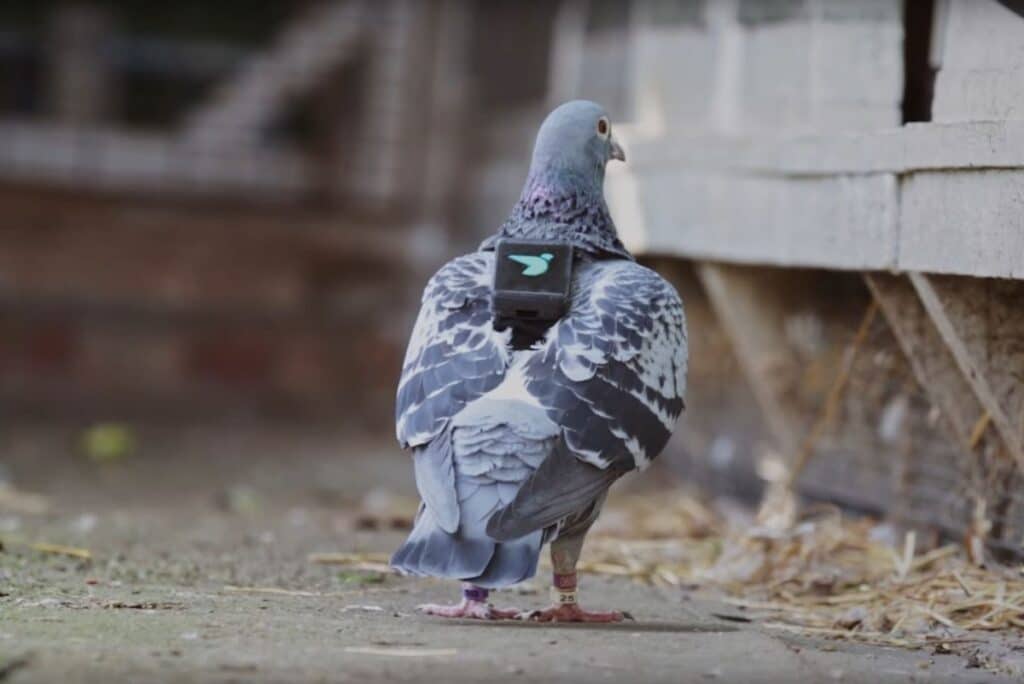
Conclusion
The domestication of pigeons is a compelling testament to the intricate and multifaceted relationship between humans and the natural world. Over thousands of years, these birds have been integrated into our societies for a myriad of reasons, spanning from their symbolic and religious significance to their practical utility in communication, food production, and sports. That shares our world, ultimately enriching the tapestry of human existence.
Pigeons, or rock doves, have transcended their wild origins to become an integral part of human history, culture, and tradition. As a symbol of peace, a messenger of vital information, a source of sustenance, and even a subject of scientific fascination, pigeons have played diverse roles in shaping the course of human civilization. It underscores our capacity to find value and purpose in the creatures.
Their domestication serves as a reminder of our enduring connection with the animal kingdom and the countless ways in which we have harnessed the unique qualities of various species for our benefit. The domestication of pigeons is not merely a historical footnote but a living testament to the adaptability and resilience of both humans and animals in our shared journey through time.

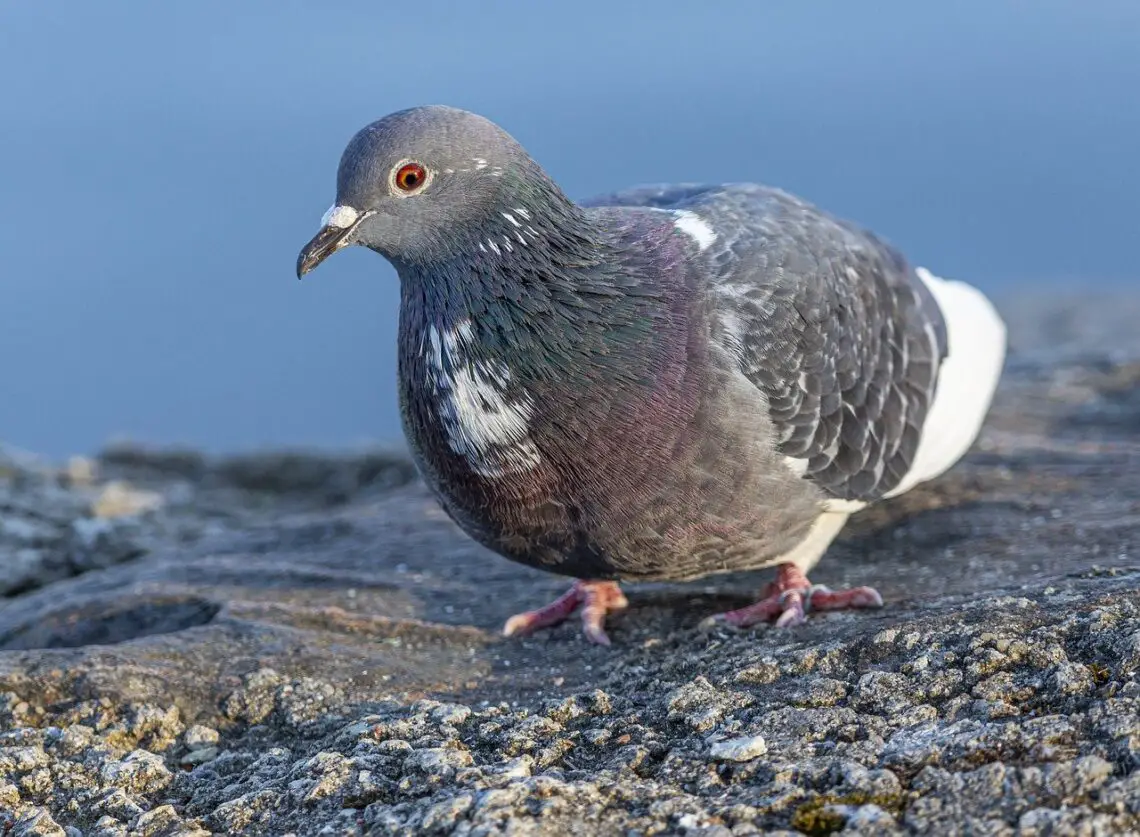
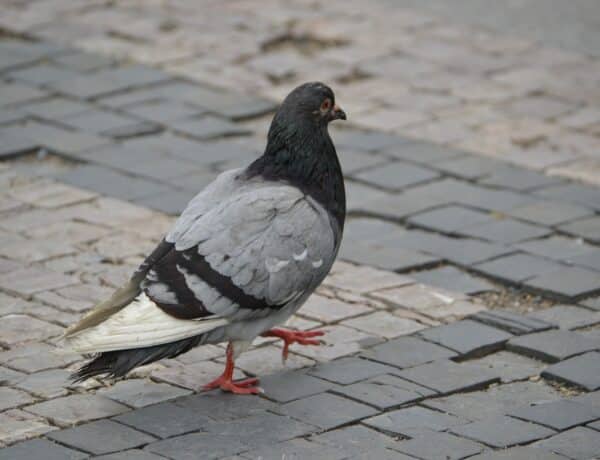
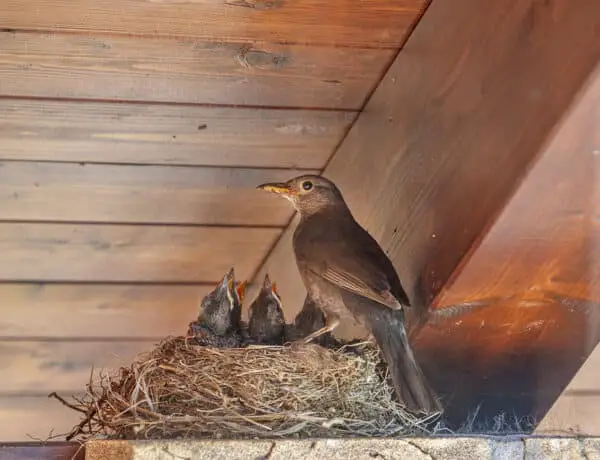
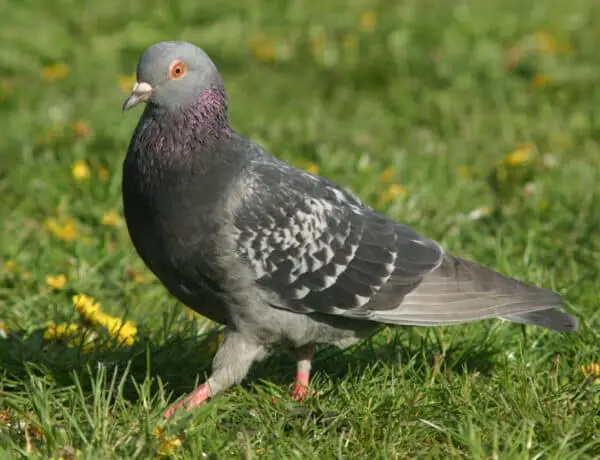
No Comments